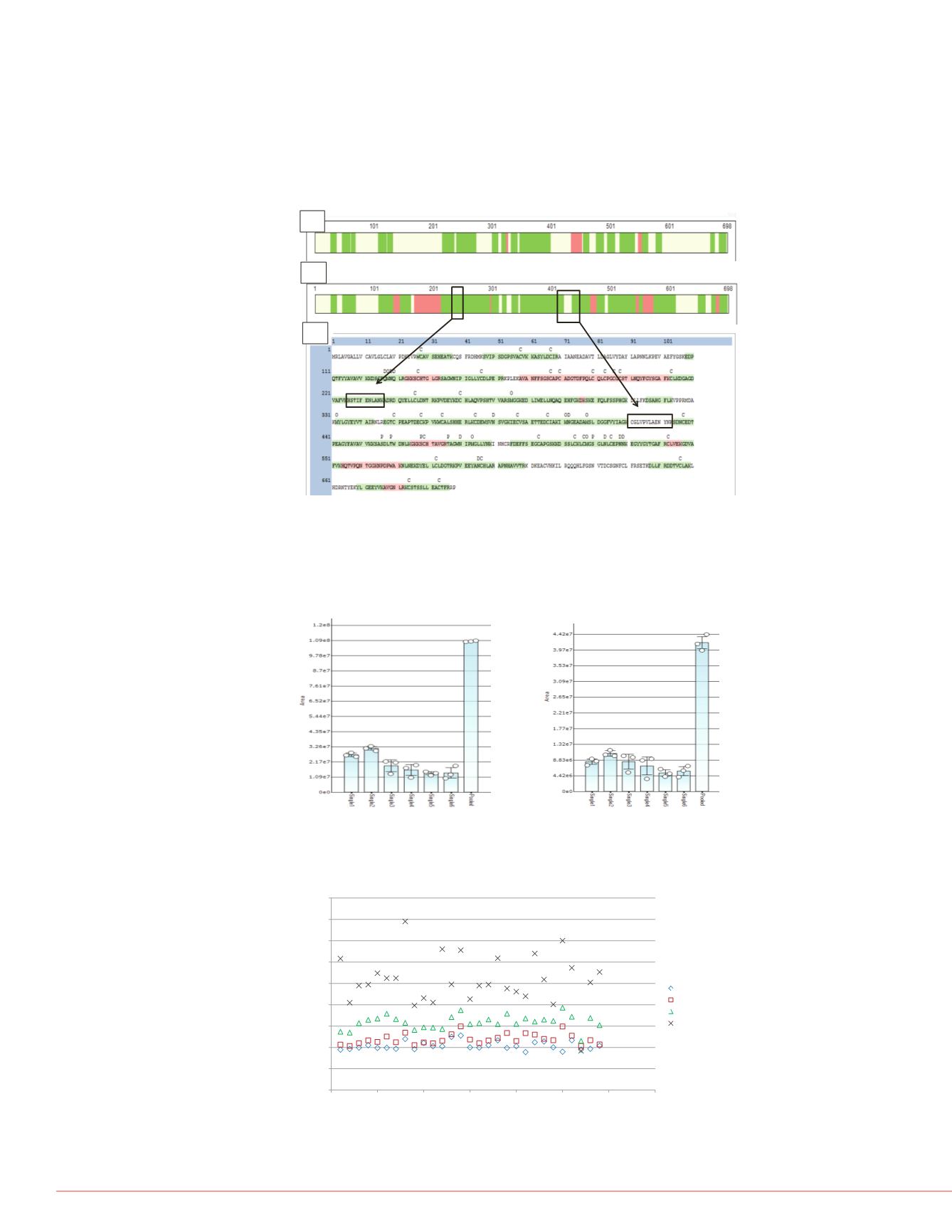

4
Targeted Multiplexed Protein Quantitation Using Serial Immunoaffinity Extraction Coupled to LC-MS
Conclusion
MSIA D.A.R.T. extraction i
protein quantitation and tr
Non-disruptive sampl
extraction using differ
Serial extraction facilit
low sample volume.
Serial extraction usin
protein characterizati
glycopeptide/glycofor
Offline immunoaffinity
reducing matrix, enric
analysis of pooled sa
References
1. Nedelkov, D., Kiernan
Nelson, R. W. PNAS,
uence coverage. Performing Ab
ometry ImmunoAffinity (MSIA)
sample. This facilitates serial
lumes yet facilitating multiplexed
ple was used for all studies. A
pared and analyze. A 200 µL
mple. A set of Thermo Fisher
tips were used with each tip
c Ab used to extract a set of
rotein extraction was performed by
tip was inserted into the same
ior to collection, reduction,
-MS analysis was performed on
pooled for multiplexing.
sed two different samples for the
A total of six extractions were
protein separately collected from
and digested with trypsin and
cond where each of the six
to reduction, alkylation, and
analysis. (Figure 1) The targeted
periments was serotransferrin and
e prepared following the same
ent proteins: serotransferrin, zinc-
sin, and lactotransferrin. Four
ere used with each set covalently
e same set of samples were used
tip per sample) followed by
estion then LC-MS. The second set
cessed through serial extraction by
ple, one sample was first extracted
nti-lactotransferrin etc. and the
to reduction, alkylation, and
S.
Results
Figure 2. Comparative coverage maps for serotransferrin from
DDA experiments of (2a) digested plasma and 2(b) pooled
extracted digested. Figure 2c shows the pooled extracted
serotransferrin digest coverage map as determined from
Proteome Discoverer. The open sequence sites are attributed
to either short peptides (3-5 amino acid residues poorly
mapped by database searching) and sites of glycosylation.
analyzed by evaluating precursor ion intensities for sample RAW
files not expected to contain the targeted protein.
List all non-Thermo trademarks and registered trade
Eksignet, Mascot. Follow this with: All other tradem
section to black text when finished.
This information is not intended to encourage use of
of others.
FIGURE 3. Comparative analysis of peptide quantitation as a
result of extraction step vs. pooled response for an unlabeled
peptide vs. An N-linked glycopeptide. The response is
consistent across each peptide as a function of order
extracted. The two peptides are boxed in Fig. 2c above.
(2 hour)
#3 #4 #5 #6
Pooled
LC-MS
Reduction
Alkylation
Digestion
ting the effects of serial dilution
o sample preparation types were
nalysis vs. pooling samples.
C) Serotransferri
A) Alpha-1-antitry
represents the degree of
MS analysis. For exampl
where the alpha-1-antitry
other targeted protein ex
HSTIFENLANK
C*GLVPLAENYN[Hex5HexNAc4NeuAc2]K
0
0.5
1
1.5
2
2.5
3
3.5
4
4.5
0
5
10
15
20
25
30
35
Peptide AUC Ratios [Sample 2: Sample x]
Serotransferrin Peptides N- to C-terminus
Single2:Single3
Single2:Single4
Single2:Single5
Single2:Single6
2a
2b
2c
FIGURE 4. Comparative AUC response for all targeted
serotransferrin peptides to evaluate the AUC ratio per peptide
from the second MSIA extraction across all subsequent MSIA
extractions.



















